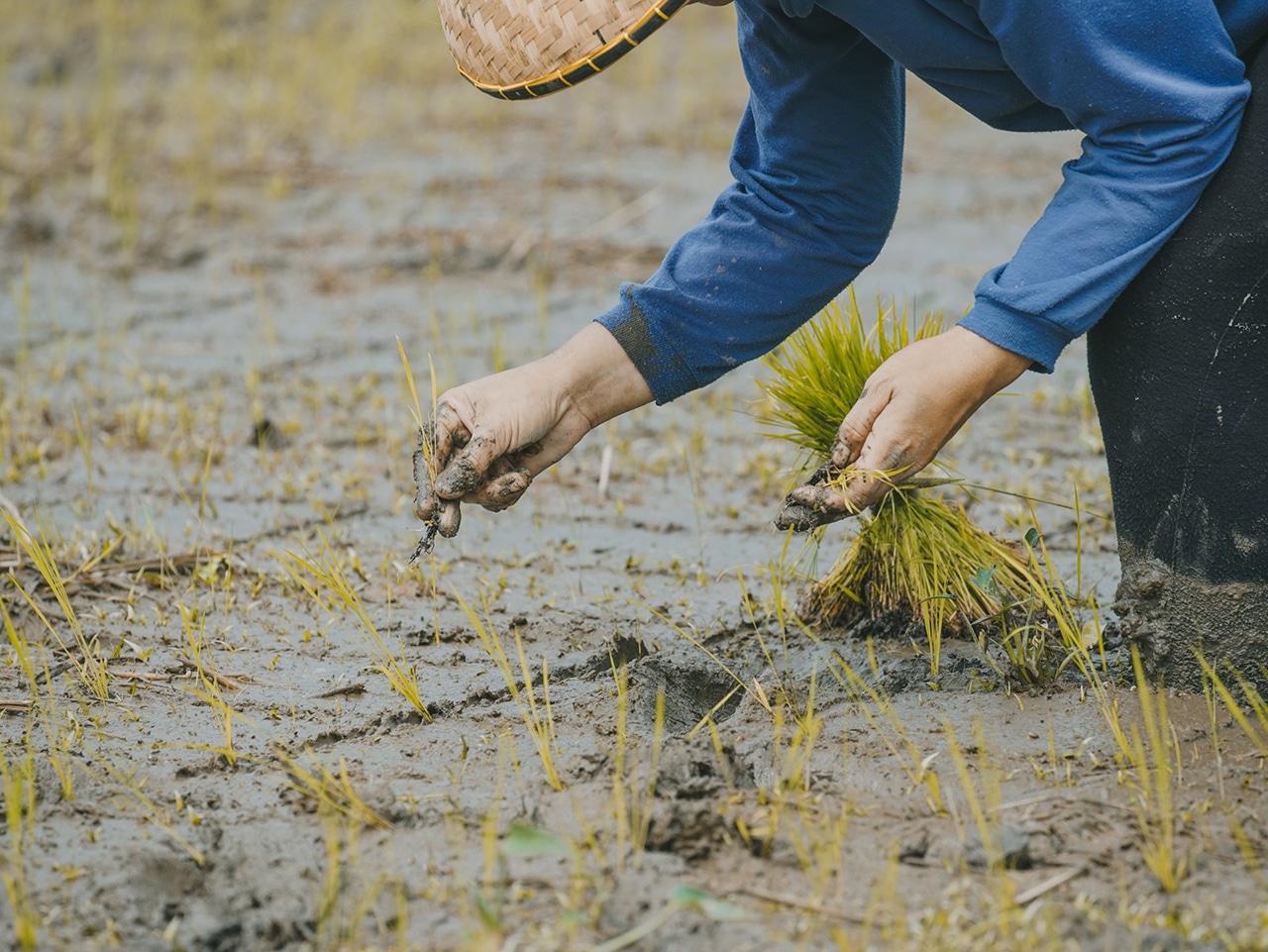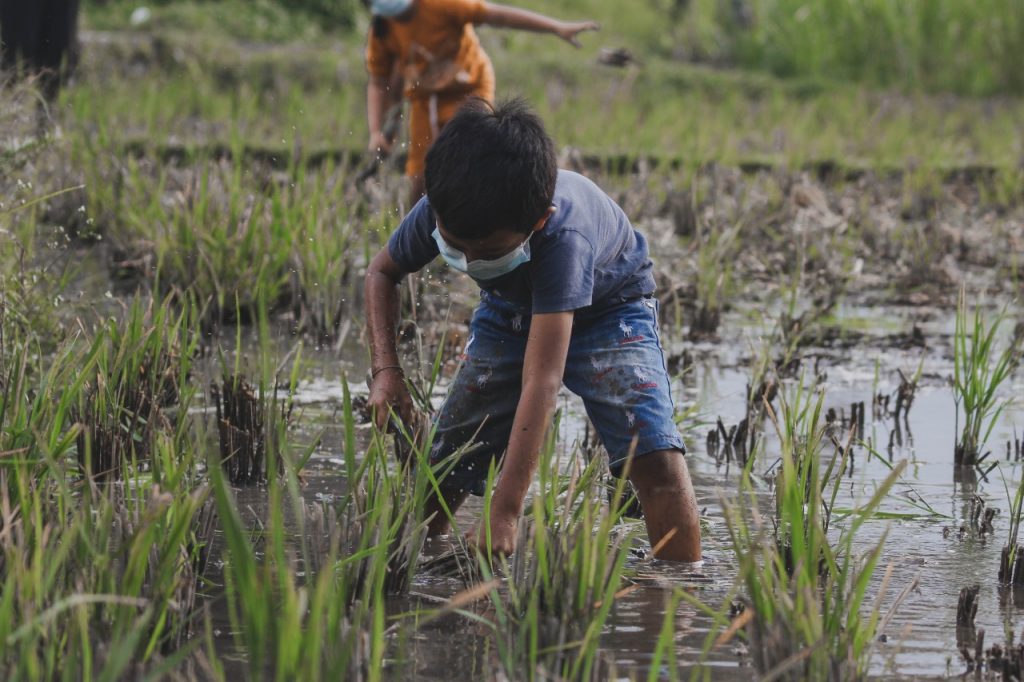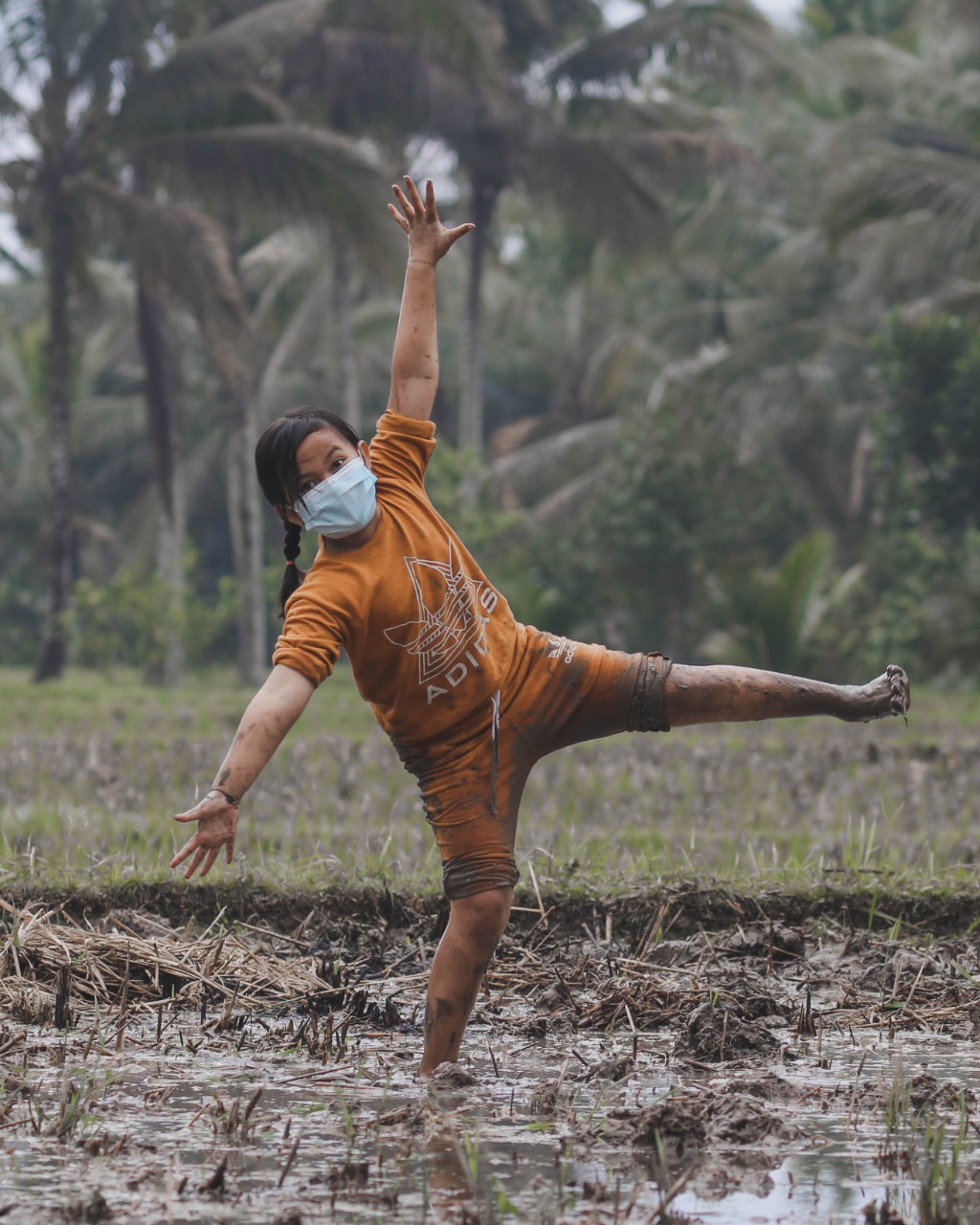
From behind their face masks, we can see joy and happiness radiating from the eyes and faces of our Eco Warriors while learning in the rice fields. The full story of their activities can be read in the previous article. In this article, I will share why rice fields can be the perfect classroom.
Rice fields play an important role in the development of our island, especially food security. Without rice fields, how can we have rice? With children studying in the fields, we instill this awareness. We also teach them to respect nature and farmers, as well as appreciate the food they have.

To grow rice, seeds must be planted in the mud. Not only is mud useful for growing rice. Christine Kiewra, a natural education expert, revealed that mud trains children to use all of their senses as tools, starting from the feel of mud on the skin to its smell. They can also learn to go beyond their comfort zone when they jump around in the mud. This is part of sensory training for children and in line with the activities that we carried out. Initially, some children refused to hoe the mud due to fear of worms and dirt. However, once they tried it, they realised it was fun and enjoyed it.
Several health and well-being articles also mention various other benefits of playing in mud, such as to develop creativity and increase endurance. Therefore, mud has many benefits for a child’s developmental stage and is not limited to a child’s age. We can find mud without limits in the rice fields, and as long as there are rice fields, there will always be mud to provide benefits for health, well-being, and child development. In addition, we can directly observe the natural phenomena of rain, sunshine, rainbows, birds, and the growth of the crops. Every day provides a different and interesting lesson – being in the rice field is a great classroom. (Zeni Natalya)




